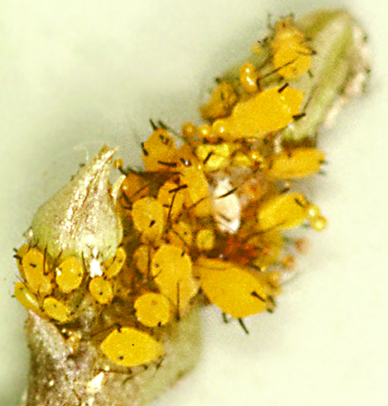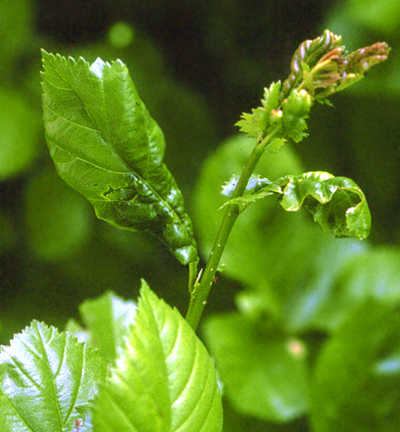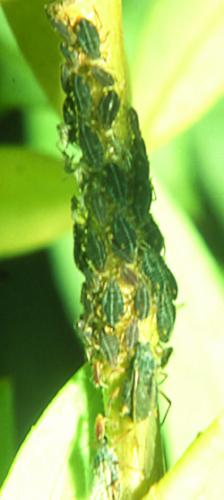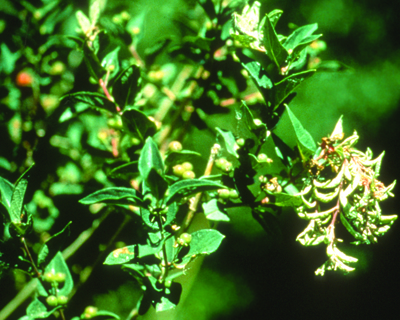Aphids
July 30, 2015
Insects and mites
Numerous aphids feed on trees and shrubs in the landscape. They may occur throughout the season when plants are actively growing. Some are vectors for viral diseases of plants.
Aphid species range in size from about 1.5 mm to 4 to 5 mm (giant willow aphid).
Symptoms
Aphids suck plant sap from leaves and stems causing distorted growth, yellowing of foliage and premature leaf drop. Aphids also excrete honeydew, a sticky substance that sooty mold fungi can grow on.

Aphids are soft-bodied, pear-shaped, and can be distinguished from other insects by their tailpipe-like cornicles used to secrete pheromones. Cornicle length and shape are used as identifying characteristics of aphids.


Distorted growth on hawthorn caused by aphids (left). Giant willow aphid (right).
Management
Aphids have many natural enemies, including syrphid fly larvae, lacewings, lady beetles and parasitic wasps. Soaps, oils and other insecticides are also effective.

Wooly alder aphids, Paraprociphilus tesselatus are shown here on silver maple. The white covering is made up of strands of wax.

Witches’ brooms on Tataruian honeysuckle caused by the honeysuckle aphid, Hydaphis tataricae.
Print a PDF of this page: Aphids



 Print
Print Email
Email



